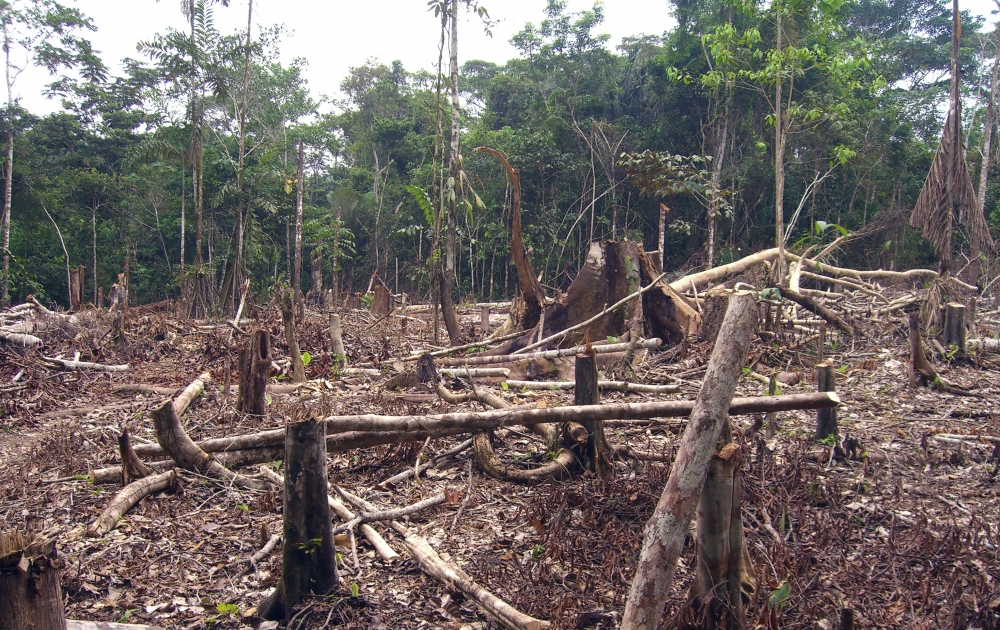
Malaria in the Amazon

The Amazon is burning at the hands of humankind, but the jungle might just come back to bite those who are responsible. Literally.
A new study by UC Santa Barbara’s Andy MacDonald found a direct relationship between deforestation and the transmission of malaria by mosquitoes. Regions with a lot of deforestation saw many more cases of malaria. What’s more, the increase in malaria was associated with a subsequent decrease in the rate of deforestation. The paper appears in the Proceedings of the National Academy of Sciences.
“People have been really interested in the effect of deforestation on malaria transmission,” said MacDonald, a disease ecologist at the university’s Earth Research Institute. “In the 1970s, Brazil started to incentivize settlement of the Amazon, and we saw a huge increase in malaria transmission associated with that.”
Many human pathogens are maintained, in part, in the ecosystems and environments that surround us. So, how might changing the environment influence the transmission of infectious diseases? This is a huge topic of research in the study of ecology and public health, since researchers would like to be able to predict what might happen as the climate and land use change.
Unfortunately, previous findings on malaria in the Amazon have yielded contradicting results. Some researchers concluded that deforestation increased the transmission of malaria. Other studies found higher rates of malaria in places that had more intact forest. These sorts of controversies are precisely the kind of topics that attract MacDonald’s interest.
He and his coauthor, Erin Mordecai at Stanford University, decided to compare trends in deforestation to data on malaria cases. Fortunately, the Brazilian government keeps meticulous public health and socio-demographic records that proved a valuable resource. For environmental conditions, they turned to satellite and remote sensing data, mostly from NASA’s Landsat and MODIS satellite imagery. In fact, the precipitation data used in their study came from UC Santa Barbara’s own Climate Hazards Group.
The researchers found a strong and consistent effect of deforestation on malaria transmission in every model they ran. More deforestation led to more malaria, and more malaria then decreased the amount of deforestation.

The relationship between deforestation and malaria wasn’t a clear when researchers simply looked at the spatial data. The key to their findings were comparing rates of malaria and deforestation over time.
Photo Credit: ANDY MACDONALD
In contrast with prior studies, MacDonald and Mordecai were careful to account for the feedback between the disease and deforestation running in both directions. Unlike in an experiment, it’s challenging to control for everything that might influence the outcome of interest in an observational study. Confounding factors can creep into analyses undetected and throw off results.
“We actually found that if you don’t control for that feedback between malaria and deforestation you end up underestimating the actual effect by about a factor of three,” MacDonald said.
The team drew on techniques from econometrics to mitigate these confounding factors. They then tested many models with a variety of different variables on different subsets of the data. The models always yielded similar results.
“If you probe a question with lots of different models, and you always get basically the same answer, then it gives you a lot more confidence about the estimated effect,” MacDonald remarked.
Decoding the connection
Having established the relationship between deforestation and malaria, MacDonald plans to probe the underlying mechanisms in the near future. Currently, he and Mordecai aren’t certain exactly how the two influence each other, though they do have a few hypotheses. “Clearing forest can increase mosquitoes’ breeding habitat on forest edges,” he said. “It can also alter the microclimate, thereby changing the temperature that influences how fast the mosquito develops and how fast the parasite develops.”
Also, clearing forests means there are more people in close proximity to mosquitoes, and migrant settlers likely have less immunity to malaria than those who are from the area.
The scientists are also interested in how the geography of deforestation affects this relationship. For instance, they found that a higher incidence of malaria decreased the amount of deforestation only in the interior of the Amazon. They found no evidence for this effect, or for the effect of deforestation on malaria, in the jungle’s periphery.
While MacDonald is still uncertain why this might be, he has a few conjectures. Deforestation in the outer Amazon mostly consists of consolidating already-cleared areas where malaria mosquitoes may not be as prevalent. Additionally, frontier settlers clear the land themselves, in contrast to the situation in the outer Amazon, where large land owners generally hire workers to clear forest for them. While workers can be swapped out when they get sick — maintaining a constant level of land clearing — settlers cannot replace their own labor when they fall ill.
MacDonald also suspects that patchwork deforestation, which increases the amount of forest edge, will show a stronger correlation with malaria than clearing an equivalent area in one large swath. He plans to investigate many of these questions in collaboration with on-site researchers in the Amazon.
“The findings suggest that if we can focus conservation on regions of the Amazon that are more intact, then we could potentially have a win for conservation and a win for human health,” MacDonald said. Reducing malaria would be an added benefit of preserving more pristine regions of the forest that may not come from restoring areas that have already been degraded.



